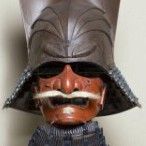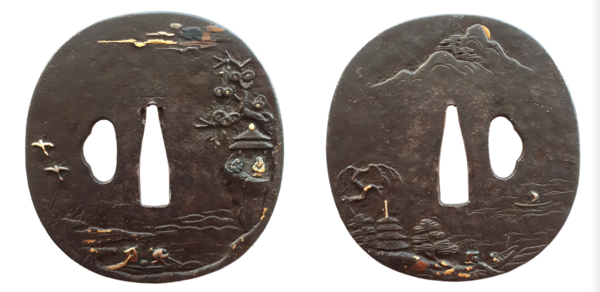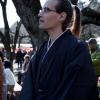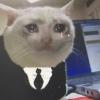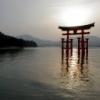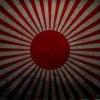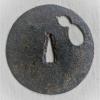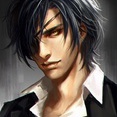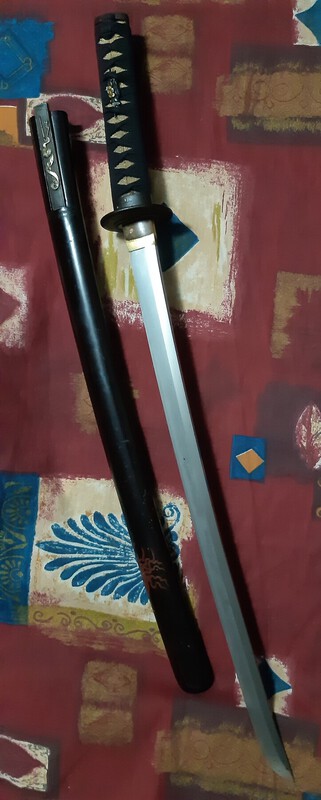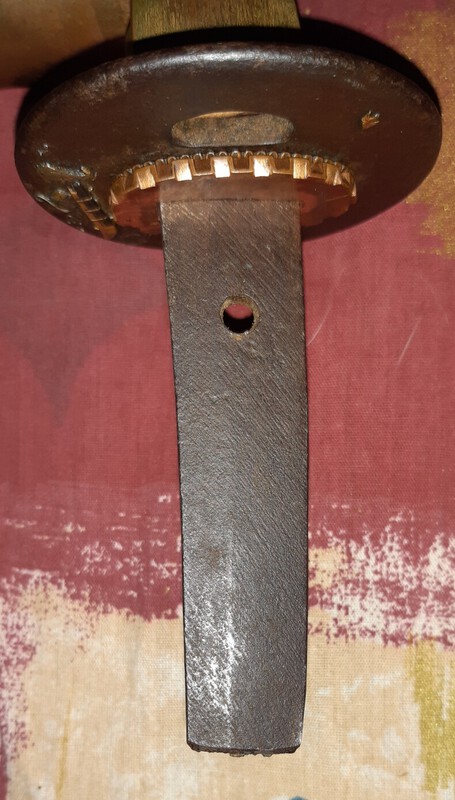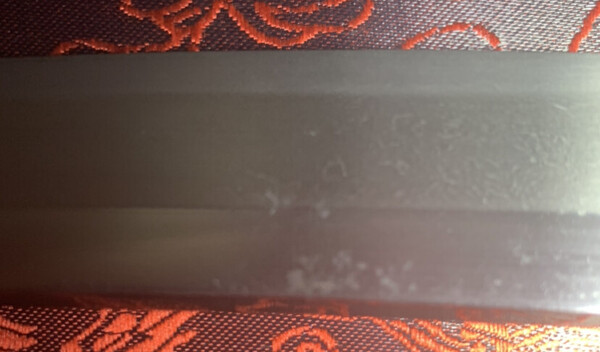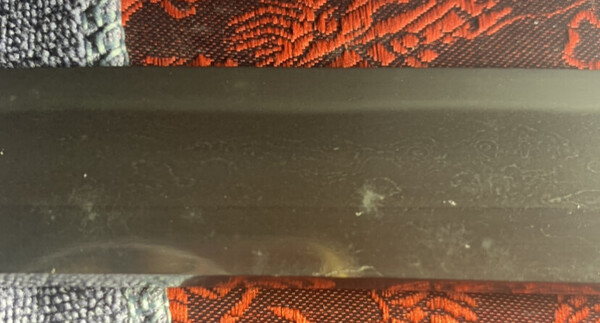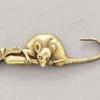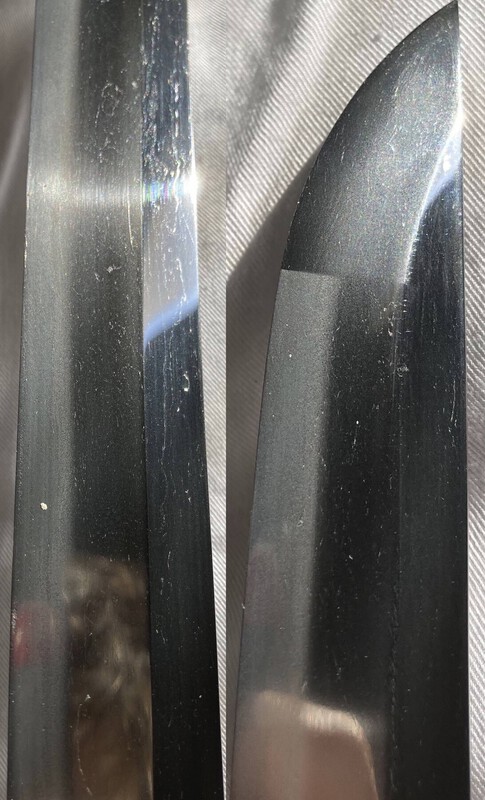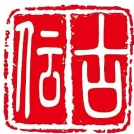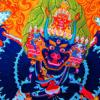Leaderboard
Popular Content
Showing content with the highest reputation on 03/18/2021 in all areas
-
Well as I mentioned bit earlier this year in a thread in here I have been working on a index of Jūyō items. It has been ongoing for a few years now but now I have the 1st version finished. It took some time as I originally planned to just have old swords (Kotō) in a document (as they are my own personal interest), but then I didn't want to do a partial job, so I took on all of the swords, and finally I forced myself to tackle all the fittings, attachments and kinzōgan, kiritsuke etc. As I typed probably few hundred thousand kanji characters in by hand the project took a while. Now this should have all of the Japanese characters that appear in the index pages, and I have written smith / school etc. into Western characters, followed by Japanese characters. However I am not yet comfortable enough trying to translate the style of fittings, kiritsuke-mei, kinzōgan-mei etc. as I would make too many errors so for those you have the Japanese text that I typed in. The format in this should be very simple to follow. It is the same as in my last index (Kokuhō, Bunkazai, Bijutsuhin). 691 pages, 66. Jūyō sessions and 14792 items (if I added them up correctly). Hopefully the PDF will be easily readable (it should be searchable too). Now as this has been a solo project spanning over a long time period, there must be some errors in there that I have made (there are definately some in rare fittings makers as fittings are not really my thing and sometimes I found 0 results with Google on some of the mei). If you spot some errors, send me a message and I will fix them for next release. I plan to make a yearly updates after NBTHK releases the session results. Might be bit boring stuff as it is just lots of pages with plain text. I hope some will find this enjoyable and can find some help in personal research etc. Juyo Index.pdf10 points
-
3 points
-
Karusk Recently I have been following a Japanese word of advice from Dōgen Zenji for begging Buddhists monks. If I like something I say so, otherwise I keep quiet. I especially avoid giving opinions on things for sale which are often between members. (Seen the trouble that gets kicked up only too often.) If necessary, especially if asked directly, I might send a pm with my personal opinion, but personal opinion is all it is. Life is short, and it takes all sorts, and some folks are fragile, some are difficult, and some are actively looking for a fight. It sounds like your heart and mind are generally in the right place. Hang in there.3 points
-
Well, if the tsuba can cover a "loose" cut, then its practical, other considerations is if it's comfortable to hold it in a sword or if can fitt well in any koshirae. I know I'm very weird, both here and in Japan, and such legends like Torigoye will hate me if was alive...but I think tsuba from Edo period (or even Momoyama) could consider a work of art independent from the nihontō, and could appreciate and delight like a painting. Also I must admit that I'm a kinkō lover, and an Edo period lover, as I'm also a Barroque lover regarding Western art.3 points
-
A friend has a wakizashi by this smith, Masatsugu. He reckons Masatsugu produced very good work. Just phoned him with your questions, and he says this line of smiths were probably brought to Okayama by Kobayakawa after Sekigahara, probably from Kai-Mihara. They worked below the walls of Okayama Castle. First generation signed Masanari/shige. Second gen. signed Masatsugu Third gen. signed Masamori. When Ikeda Mitsumasa moved over from Tottori, he probably removed Masamori from the residence which had originally been granted to them by Kobayakawa. Although very little of this is written down anywhere, this is the fruit of my friend's research. He thinks that the yari and naginata smith Masanao of the Kai school in Mihara is also related, from the similarities in the way they cut their Mei. Oh, he also added that they seem to have worked in close collaboration with the main body of smiths east of there in Bizen. Apologies if any of this is mistaken. Just what I heard, or thought I heard over the phone!3 points
-
Hi Dale , it is in the catalogue of an exhibition held at the Los Angeles Municipal Art Gallery in 1964 entitled Arms and Armour of Ancient Japan . Robert Haynes was one of those who put the exhibition together. Ian Brooks3 points
-
2 points
-
Yes even a nihonto will stand this abuse. Modern nbthk tamahagane has nothing to do with bad steel. If you can tell me why any other steel should be better for swords pls educate me. I get some babu flashbacks now :D To the topic the seller has sold 6-8 blades since the one in the start of this thread. And from a far they looked the same but where different. A hira; shinogi and Shobu zukuri and 2 yoroi doshi and one osuraku zukuri. I don’t even get what you talk about when you say he relisted it.2 points
-
2 points
-
Use has very little to do with the study and preservation of Nihonto. This discussion doesn't belong here.2 points
-
I wasn't going to get into this because it opens a bit of a can of worms... but oh well. There are a heap of oddities around pattern 5 swords. I have one of these, as Trystan somehow remembered! Mine has number 297 (pretty sure or maybe 2X7?) On the saya. However, it does have a serial number on the blade, very faint. 300103 I'm guessing. Last number is half stamped but 3 is likely. It's in the Jinsen font too. To head off the question, no it is not a pattern 6 blade in pattern 5 mounts. I can't quite tell... maybe a single stamp on the fuchi... it's at the point I can't differentiate between a dent and dust or a stamp. Now... I also have another example with no marks at all on the blade, but the serial number on the saya is 251125. No arsenal marks I can find. So not quite fitting the what Tristan has, but probably from around the same period.2 points
-
Pretty mindblowing Jussi. The amount of effort is staggering. I'll add it to the downloads section and make you the author, so anytime you have any update or correct you are able to replace the file yourself. The Nihonto community thanks you.2 points
-
I re-looked at the pictures and I would like to point out that the bottom of the scabbard has been sanded down. This was possibly done to address the rust issue in this area. Another comment while I am at it, one can distinguish between spray paint and regular paint with a simple test. Just take a q-tip and soak it in strong alcohol and dab it on the paint in an area that you are not concerned about. Spray paint will easily come off while regular paint will be more resistant. I say this based upon personal experience.2 points
-
Kyryl, you go up on top of the page to NIHONTO INFO. When you click on it, you will see RESEARCH. Clicking on that brings you to NIHONTO KANJI PAGES, and then further to KANJI FOR MEI. It is very helpful and easy to use, I think.2 points
-
Hi, The Poem: かへりみよ、これもむかしは花、すすき(薄)まねきしそで(袖)のなごりなりけり。 Meaning(free translation): When living, she(bone) was a beauty like a flower. But Japanese pampas grass is fluttering in the wind like sleeves of her Kimono now.2 points
-
I have been slower than usual promoting the show due to uncertainties with covid. I spoke with the Hotel today and they are optimistic (99% sure) I can have the show this year. States all around Illinois are opening up and they are waiting for the Governor to rescind some restrictions so they can have events like ours. I am not as sure as they are but i am cautiously optimistic. As soon as i know for sure i will update the website immediately (www.chicagoswordshow.com). In the meantime I want to share this update as I have been getting a lot of inquiries about coming to the show. It seems there is a lot of pent up demand for a show. Please note: If anyone does not feel comfortable coming, i understand completely. There will be NO pressure from me to attend the show. Everyone's health comes first. If we do have the show I will enforce all health requirements and if anyone does not want to comply please stay home. That being said I am working with the hotel and hope to use the large Ballroom on the mail floor to allow social distancing and better ventilation. I will update the website as we get closer. I would recommend you make hotel reservations if you plan on coming, they can be cancelled if we don't have the show. Here is a link. https://www.hyatt.com/en-US/group-booking/CHIRW/G-JASW?src=envision_email_grpreserv_ENG_20201030_GroupBooking_TC000000170A000007762ENG_G-_28798 You can also click the link to reserve on my website. I have a list of those who had tables reserved for last year's show (and those who paid and asked me to to apply it to next year).I will hold everyone's tables. Do not send money for table(s) until we know for sure. As nothing is settled yet you are welcome to contact me but i won't have firm answers until the State relaxes the meeting limits. I will post changes/updates immediately on the website. I attached a flyer you can print in case you can share it with others. Fingers crossed Mark Jones1 point
-
1 point
-
I found this interesting. I was cleaning this blade getting ready to photograph it prior to sending it off for polish & found the original polisher had scratched in his name. I believe it is Masa ____ & possibly Saku? any help would be appreciated. Of further interest to the Gendai collectors in the group: The blade is signed Baba Akitsugu who also signed Baba Tsugukiyo. He was an RJT Smith making mid to high grade Nihonto. This blade was made in 1936. I don't know the reason for the switch in names. This blade was made as a dedication to a shrine and is inscribed as such. Perhaps Akitsugu was the name used when not making military blades? Jim1 point
-
1 point
-
Just a reminder. If a signed bigger or big name and coming out of Japan with green papers, then probably you should pass on it. If anyone can correctly identify the tsuba I am talking about, you get a gold star. No need to import junk.1 point
-
1 point
-
1 point
-
Dead giveaway: damascus-esque patterned steel, not Japanese in the slightest.1 point
-
Sorry this is a Chinese replica , trying to be a Japanese sword.1 point
-
Yeah....looks great condition! Did they seriously ship with the tsuba on the post as always? Maybe we need to ask Markus and pay him to do a write-up in Japanese of how not to pack tsuba, that we can send with every purchase to sellers.1 point
-
Consider yourself lucky it's only a stick. This is a sword forum. No-one here really cares about reputation. I daresay most of us don't ever look at them or even know what ours is. That's a social-media throwback. Said many times to newcomers here though...less is more. Always good to take it slow and read more than post. Best way to integrate.1 point
-
So why make a downvote take my reputation away? I just started and all it would take is one guy to come and downvote everything i say and im back to 0 rep here. Seems kinda unbalanced and arbitrary to me. Brian i am sorry about my argument with barry. I felt it unfair and I’m not one to keep silent. In these other posts someone is downvoting i even quite plainly said that his stuff is low quality. That I wouldn’t recommend buying the item i linked. I lost a days worth of activity from my reputation cause someone disliked three different posts where all i said was buyer beware and dont pay full price from anyone. I even specifically said the item i linked wasn’t worth 500 in a pawnshop when it’s listed for 2400 bucks. I was just linking to give an example of a hirazukuri katana and i was quite clear about that. can you really blame me for being a little disappointed? Im just trying to build my rep up a little here, learn, and help answer people when im around and no one else is. If ive broken any rules im sorry. If ive stepped on any toes im sorry. Ive been a silent member of this forum for years. You guys taught me everything i know and are the reason i dont have anything like that cobra abomination in my collection. I have mad respect for you specifically and am sorry i keep drawing your ire. 😞1 point
-
Very interesting...I think I have exactly the same bag at home. Wow.1 point
-
1 point
-
1 point
-
I am unsure if this PDF article has been posted before, it dates from 2012 Samurai-Evolution-of-Arms-Armors (2).pdf1 point
-
Very well put Stegel and bravo on expanding on my snippets by providing the more exact extracts of that conversation with Nick. My memory is not perfect and it is important that they are provided in the correct context, which I failed to do. As is often the case with written word, I did and still do read that as a statement as very deliberately separating the 'remains of a brown' from the aforementioed 'rust', suggesting to me you were referring to something other than rust, hence my assumption of that being paint. A simple, incorrect deduction which I am glad you have cleared up. I am still of the opinion that the black paint on Type 95 saya is limited to a crude protective measure, as any examples I have seen that has a more professional appearance (all original paint properly stripped) have ended up being fairly obviously post-war work. I sadly wasted a fair penny buying and then selling these on at a discount (and yes, I always stated that they were repainted in my opinion when selling). I would like to see a (for want of a better term springing to mind) professionally painted black saya with an age appropriate patina to support the idea that they may have come from an arsenal. Better yet, any kind of documentation or photography that might indicate that there were Type 95 saya leaving an arsenal at any time with black painted saya, though I doubt any examples of these are known at this time to collectors and researchers. I agree wholeheartedly. I think it is now important for you not to misquote me either. I think. I suspect. My theory. I have expressed my *opinion* and every time been very careful to state that it is my opinion or theory. A theory has yet to be proven and is therefore not a fact. I don't think I can be much clearer than that? (Only one question mark necessary). I have not categorically denied that there may be arsenal painted black saya. My concern is that I see little to no evidence of this and I see a lot more evidence that black saya seem to be frequently encountered with traces of original brown/green paint under or around the black. Yes, I acknowledge that it is subjective to try and determine whether a painted object exhibits genuine patina or not and I have never minded disagreement in this regard when we have discussed examples. As already stated though, that leads me to question whether there are genuinely original, arsenal black saya for 95s. Stegel, I know you have at least one example of black saya, so it would be good to see some detailed photographs of that. You know the spots to focus on for patina. Better if you can take the throat out and photograph that too, but I understand that you may be as reluctant to take them apart as I am. That would be great if you could. Better photographs will go a long way towards trying to determine which category this sword falls into. Let me conclude that I very much respect your opinion when it comes to Type 95s, Stegel. You taught me a great deal about them in the early days when my enthusiasm started to grow and I began to focus on a more specialised area of collecting. That doesn't mean we will always agree (perhaps in the case of black saya for now at least), but I do enjoy the discussions, as I hope you do. I would prefer you not call me dishonest though, as the necessary intent to deceive is not there. Likewise, I have no 'cause' beyond enjoying and researching Type 95s and sharing those observations with other collectors. Quick edit: wanted to add that I would greatly welcome and appreciate participation in the Black Saya thread. Since this is an open topic for discussion and we have different views, it would be good to see some evidence for arsenal painted saya provided. Your extensive collection of photographs of 95s over the years should provide a number of good examples that we can discuss and compare.1 point
-
1 point
-
1 point
-
1 point
-
1 point
-
@Karusk I had almost forgotten I had promised to post the Bizen muromachi example I had. So like yours, it has the typical Bizen nagako shape(Kurijiri), and a saki-sori shape. When I asked Robert Benson, apart from saying it was Bizen, he said it might predate the sengoku so that explains differences like the increased taper and it not having the typical katate-uchi shape, also a machi okuri makes the nagako look bigger than it originally was. Anyways what strikes me as its most notable traits are a hada that’s mostly dense mokume with some larger itame, with nie and some chikei; a nie ladened suguha hamon that might do a bit of notare, the main activities I see are sunagashi with some nijuba, and the nioiguchi is wider than the very tight one on my older Yamato tradition sword. Kisaki has hakikake as its most notable trait. I’m sure this sword doesn’t have the same smith, and it might not even be connected to the Tadamitsu smiths but seeing as how it’s a Bizen Muromachi with suguha you would expect at least some common traits.1 point
-
1 point
-
Kyryl, with the help of the KANJI pages (Research section) you would have been able to read that. KUNITOMO1 point
-
About Mino Senjuin more precisely Akasaka Senjuin from Nihon Koto shi : Fujishima (same book) :1 point
-
1 point
-
You could say it is sacrilege, but to me the pistol had higher priority, i.e. was more worth saving. One of the weaknesses of any Hinawaju is the top of the butt, right behind the barrel. Cracks develop from the constant kick and hammer backwards and eventually a triangular chunk can fly off, so you will often see a brass cover there. Rather than straight plain, some added decoration seems to balance things out nicely. Is it a repair, or is it an original feature? In most cases we will never know.1 point
-
Beautiful! Can you please comment on the calligraphy? I think that it makes the poem even more beautiful. Thank you Morita San.1 point
-
1 point
-
Help on FB by James Lancel McElhinney Nice later Jakushi guard. My thoery os that many of those Nanga subjects allude to the arrival from China of Ingen Ryuki, the mentor of Jakushi's painting teacher Shoyu Itsunen, and the founder of Obaku Zen Buddhism. Some of Kawamura Jakushi's paintings bear calligraphy by Ingen Ryuki. Jakushi I was a samurai painter. It seems that Jakushi II was a contemporary of his, a metalworker and thus of lower social status. Shiraki Kizaemon (J2) executed J1's designs. Similar to Yagyu & Kariganeya. J4 (son of J2) stayed into the more commercial realm of macho-bori taste, but the later generations went back to J1 designs. Stephen Christensen Those are from the era of J4; Shiraki Chouemon. The Jakushi atelier seems to have had close ties to the Kiyou-Toujin-Yashiki (Nagasaki Chinatown). J4 stared making Kinai style dragons, with spalshy gold overlay. He also explored more openwork in his designs, which abandined the links with painting. J1 designs are almost all based on paintings. J6-8 went back to the old design-book, but also reproduced painting images, including windswept bamboo, based on Zenga by Kumashiro Yuhi, and traditional J1 Nanga sansui landscapes. Tsuba collectors who only look at tsuba are missing half the story. Many guards are based on paintings, prints and textiles. "Nanako" for example is a specific weave of silk that looks like fish roe. One must study all the arts to understand how tsuba fit into the story.1 point
-
Seems gimei : https://giuseppepiva.com/en/works/katana-shinto-koshirae#&gid=1&pid=1 https://tokka.biz/sword/sukekuni3.html https://www.nipponto.co.jp/swords3/WK327719.htm https://www.giheiya.com/shouhin_list/japanese_sword/katana/02-1188.html https://www.touken-sato.com/event/katana/2012/11/K-sukekuni-01.html1 point
-
1 point
-
I am pretty sure this is Japanese and pretty sure it is in terrible condition. This one might be best left as is; far too much of it would have to be sacrificed in a polish. If it were mine I would be tempted to enjoy it for what it is, as is. Grey1 point
-
I dont know if they are chinese, but the hada looks to good for the chinese work. Who ever made these swords he know what he do.1 point
-
Well I got bit sidetracked on another forum when there was talk about very large twohanded swords of variours cultures with very long blades. I thought I'll post this here, as Odachi are among my favorite types (smaller ones, not the monster swords I'll list here). Odachi 大太刀 (large tachi) is term commonly used when blade is over 90 cm in length. There are few Odachi in Japan that have blade near or over 2 meters. (I'm at my parents for the holidays, and I might have bit more information in my books but can't access them now) Most of these swords are famous artifacts. 祢々切丸 - Nenekirimaru (Nambokucho 1332-1394) Total length: 324 cm Blade length: I've seen mention c. 215 cm 太郎丸 - Taroumaru (Kamakura period 1184 - 1332) Total length: 262 cm Blade length: 180 cm Weight: 7,2 kg 志田の大太刀 - Shida no odachi (dated 1415) Blade length: 220 cm 太郎太刀 - Taroutachi (It is described being sword Makara Naotaka used in 1570 at battle of Anegawa) Blade length: 220 cm Weight: 4,5 kg Odachi made by 三家正吉 Sanie Masayoshi (dated 1843) Blade length: 224 cm 備州長船法光 - Bishu Osafune Norimitsu (dated 1447) Total length: 377 cm Blade length: 227 cm Weight: 14,5 kg Feel free to share any information you have on odachi. The more "regular" sized odachi are more to my own taste than these monsters. Just thought I'd share this small info on these couple swords (not sure if all my info is correct, so feel free to put corrections).1 point
This leaderboard is set to Johannesburg/GMT+02:00





